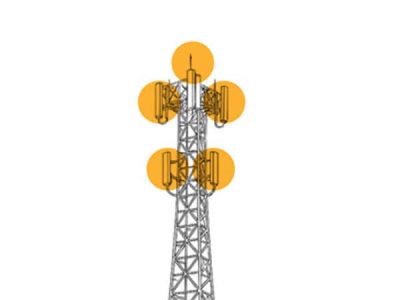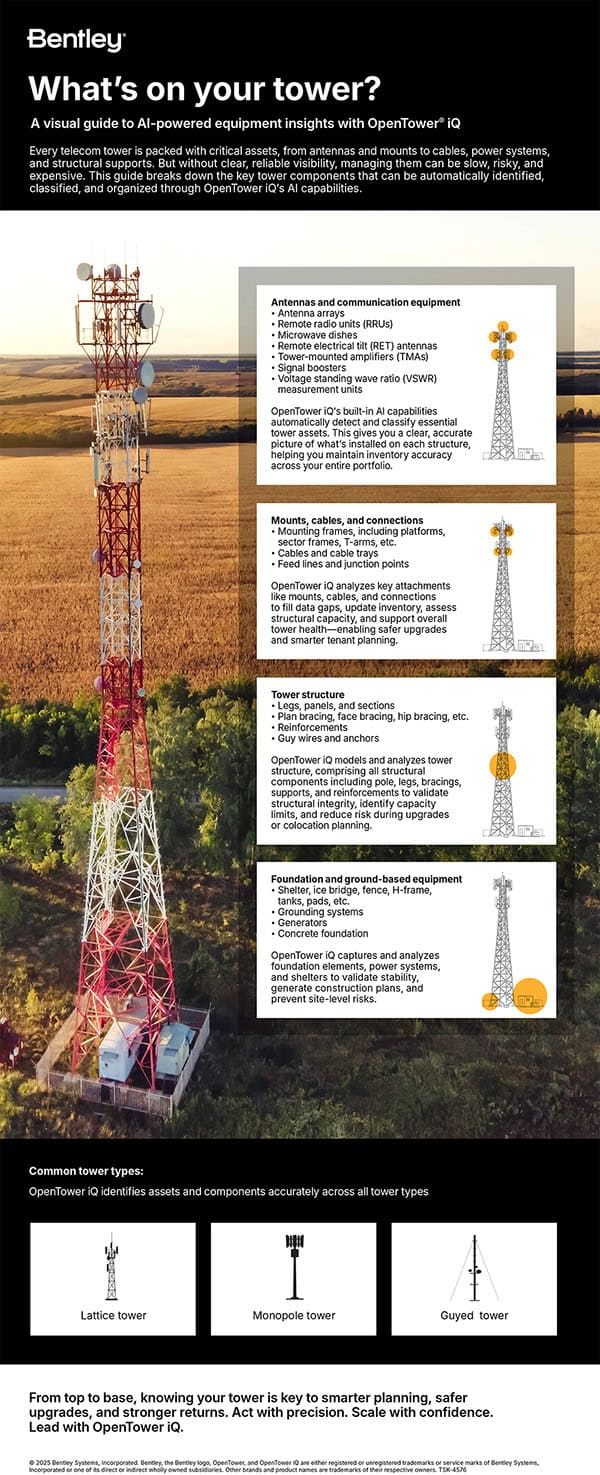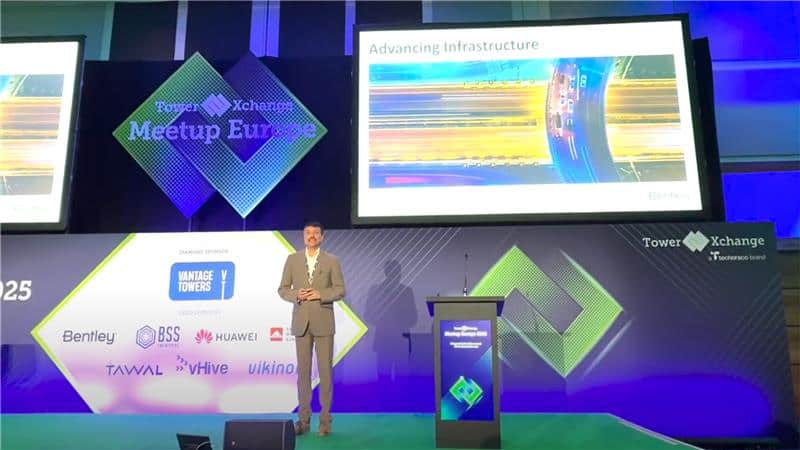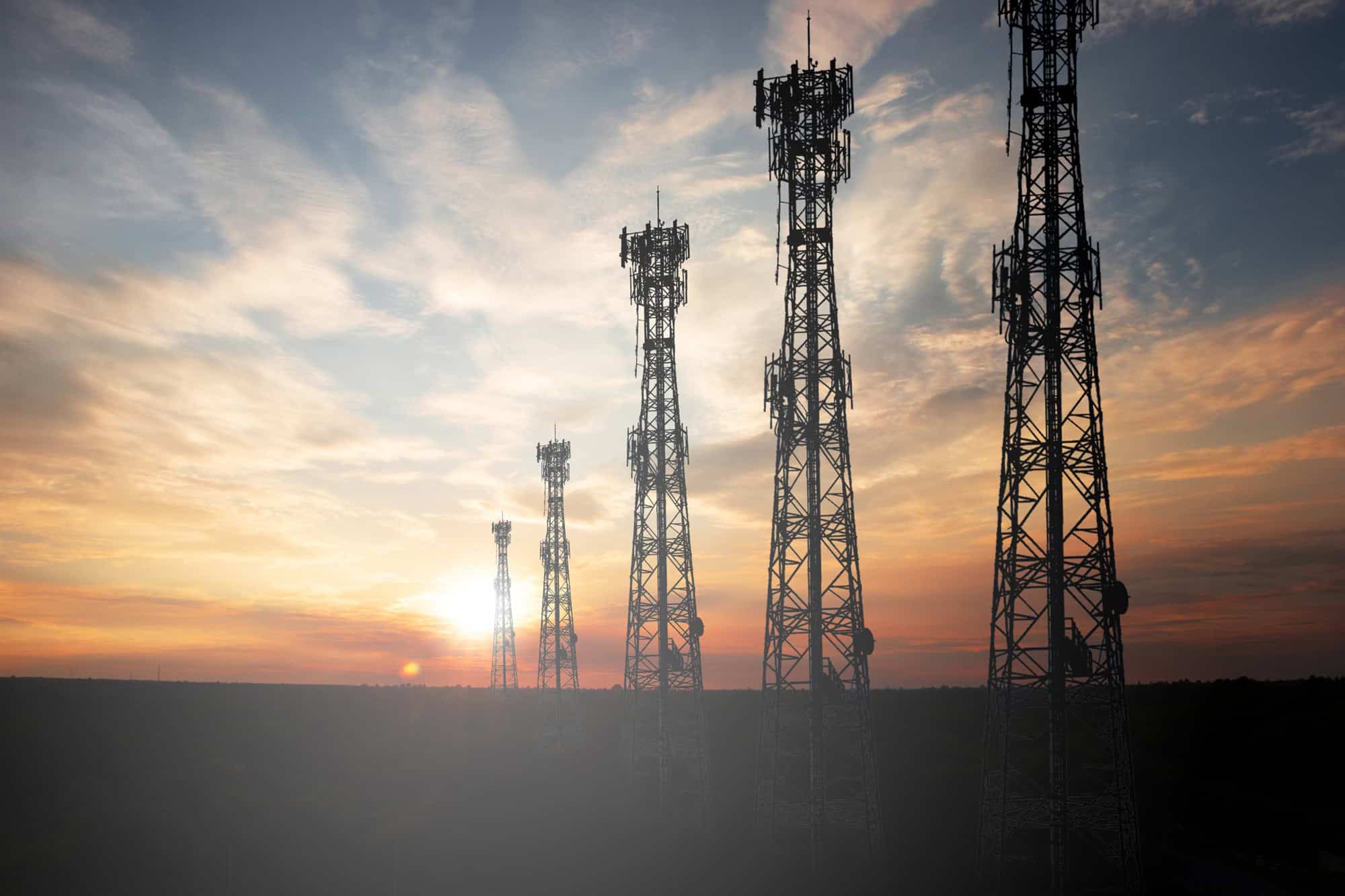How Well Do You Know Your Telecom Tower?
From a distance, a telecom tower might look like a simple structure situated on the side of the road or mounted on a rooftop. However, those who manage telecom towers know there is more to the story. That story includes shifting equipment, revolving tenants, evolving compliance demands, and the constant need to improve performance and return on investment.
For tower owners and operators, clarity is everything. You can’t manage what you can’t see. Too often, what’s listed in a spreadsheet doesn’t match what’s in the field. That’s where the real challenge begins, and why applications designed for visibility and accuracy are no longer optional.
To address this challenge, owners, managers, and operators must begin with a clear understanding of what is actually on the tower today, requiring them to go beyond outdated records and assumptions to capture the current, real-world state of the structure.
The right tower technology
Teams often start with drone surveys, image capture, and 3D modeling to generate a high-fidelity view of the tower and surrounding site. Yet, without the correct technology, what happens next is often manual and unreliable, leaving gaps in equipment records and structural insight.
With the right solution, that visual data becomes something more—more dynamic, with more context that is more reliable. Incorporating artificial intelligence into your tower solution can detect equipment, identify discrepancies, and generate a detailed, verifiable inventory. It turns images into engineering-ready context that teams can actually use.
Enter OpenTower iQ. This application brings reality modeling, asset identification, and structural context into a unified, accurate representation of your telecom tower. It combines the power of digital twins, structural analysis, and advanced AI. The result is a shift from assumption to certainty.
This article expands on the OpenTower iQ Infographic (PDF) we created, demonstrating how OpenTower iQ sees telecom towers. The intelligent tower application captures them not as generic steel structures, but as dynamic systems of critical infrastructure that keep the world connected. In the sections below, we will walk through different parts of the tower and explain how OpenTower iQ helps you see more, know more, and act with greater confidence.
Antennas and communication equipment
Antenna systems, remote radio units (RRUs), and microwave dishes are among the most valuable assets on any telecom tower. These components power network connectivity and drive tenant revenue, yet in many cases, what’s installed and where remains unclear.
One site might have outdated inventory. Another might have equipment that shifted during high winds. These small unknowns can lead to big issues when planning audits, capacity upgrades, or co-locations.
This is where OpenTower iQ can help. Its AI-powered detection and classification capabilities identify every mounted component by model, manufacturer, and position, providing teams the insight to validate records, support accurate audits, and plan future changes with confidence.
What once required assumptions and field visits is now available as verifiable, engineering-grade data. With OpenTower iQ, teams can see exactly what is installed and where, reducing risk and improving decision-making across the tower lifecycle.

Supporting assets: Mounts, cables, and connectors
Behind the primary assets and running down the tower is a dense network of mounting frames, sector arms, cable trays, and feedlines. These components are critical to tower performance and safety, yet they are often modified on site, poorly documented, or missed entirely during inspections.
Over time, this lack of visibility can lead to reduced performance, delayed upgrades, and safety risks. Unverified loads, undocumented changes, and aging or damaged hardware all create uncertainty for teams trying to manage towers efficiently.
OpenTower iQ helps close these gaps by recognizing and mapping secondary assets automatically. Using a combination of AI-powered recognition, asset libraries, and real-world tower data, it captures mount configurations, traces feedline paths, highlights anomalies, and produces accurate documentation. All of this is done without the need for additional site visits.
This level of insight provides more than a static snapshot. It gives teams a dynamic and holistic understanding of how each supporting component affects structural integrity, site performance, and long-term asset reliability.

Tower structure: panels, bracing, and anchors
The strength and structural integrity of a tower depends on more than just its height or shape. It relies on the structural elements that hold everything in place. Bracing systems, guy wires, crossarms, and vertical legs work together to support equipment loads and withstand environmental forces.
These critical components are not always easy to assess in the field. Visual inspections can miss signs of wear, while undocumented changes such as bracing adjustments can introduce stress that is not immediately obvious.
OpenTower iQ brings clarity to these structural systems. The application detects and documents bracing patterns, guy anchor locations, and load paths, using data from point clouds, reality models, or imported design files. When paired with OpenTower Designer, OpenTower iQ enables full structural analysis based on actual site conditions rather than outdated legacy drawings. This gives engineers a more accurate picture and clear understanding of tower integrity, enabling teams to catch potential issues before they escalate. It helps teams identify capacity limits and structural risks before they affect safety, compliance, or upgrade plans.

Compound: Foundations, shelters, and ground equipment
It is easy to overlook what happens at ground level. However, foundations, shelters, grounding systems, and power equipment are essential to tower stability and site performance. These components anchor the structure, protect critical equipment, and keep everything running reliably.
Over time, these assets are often moved, replaced, or upgraded in the field, but those updates rarely make it back into documented official records. This disconnect creates planning blind spots, complicates load analysis, and slows down compliance efforts.
To help close that gap, OpenTower iQ uses drone data and existing site documentation to detect and map ground-level infrastructure with accuracy. Shelter layouts, foundation footprints, pads, cabinets, and fencing are all captured and connected within the tower model. This connection allows teams to view current site layouts, link foundation data directly to load calculations, and include ground assets in structural analysis and co-location planning, all within a single, unified reference model that reflects real-world conditions.
With OpenTower iQ, your team gains full site visibility. That means smarter planning, faster response times, and better coordination across tower operations.

Manage the entire tower lifecycle with confidence
Managing a telecom tower is not just about keeping equipment upright. It requires understanding every part of the structure—from top-mounted antennas to ground-level infrastructure—as individual pieces of one interconnected system.
When you can see what really is on your tower and how everything fits together, you are better equipped to protect structural integrity, improve site performance, and unlock new revenue opportunities.
OpenTower iQ brings that visibility into focus. With AI-powered detection, engineering-grade analysis, and a continuously updated digital twin, your team can reduce risk, minimize rework, and make faster, more confident decisions across the entire tower lifecycle.
Explore the full telecom tower visual guide
See how OpenTower iQ helps teams audit, model, and plan every part of a telecom tower — from antennas to ground infrastructure.
[Download the OpenTower iQ Infographic (PDF)]
Learn more
Discover how OpenTower iQ streamlines telecom tower inspection and modeling with AI-powered digital twins.



